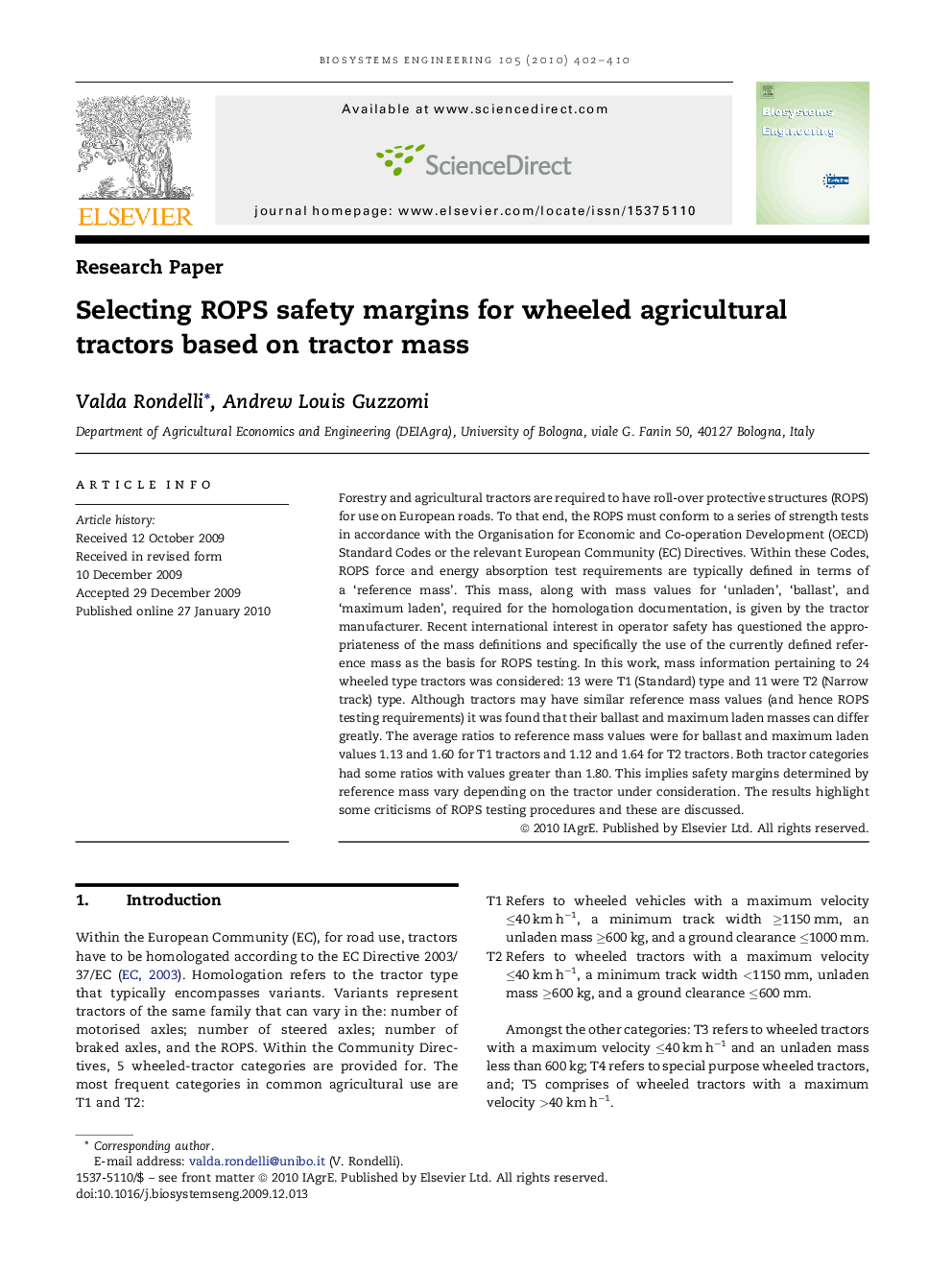| کد مقاله | کد نشریه | سال انتشار | مقاله انگلیسی | نسخه تمام متن |
|---|---|---|---|---|
| 1711979 | 1013111 | 2010 | 9 صفحه PDF | دانلود رایگان |

Forestry and agricultural tractors are required to have roll-over protective structures (ROPS) for use on European roads. To that end, the ROPS must conform to a series of strength tests in accordance with the Organisation for Economic and Co-operation Development (OECD) Standard Codes or the relevant European Community (EC) Directives. Within these Codes, ROPS force and energy absorption test requirements are typically defined in terms of a ‘reference mass’. This mass, along with mass values for ‘unladen’, ‘ballast’, and ‘maximum laden’, required for the homologation documentation, is given by the tractor manufacturer. Recent international interest in operator safety has questioned the appropriateness of the mass definitions and specifically the use of the currently defined reference mass as the basis for ROPS testing. In this work, mass information pertaining to 24 wheeled type tractors was considered: 13 were T1 (Standard) type and 11 were T2 (Narrow track) type. Although tractors may have similar reference mass values (and hence ROPS testing requirements) it was found that their ballast and maximum laden masses can differ greatly. The average ratios to reference mass values were for ballast and maximum laden values 1.13 and 1.60 for T1 tractors and 1.12 and 1.64 for T2 tractors. Both tractor categories had some ratios with values greater than 1.80. This implies safety margins determined by reference mass vary depending on the tractor under consideration. The results highlight some criticisms of ROPS testing procedures and these are discussed.
Journal: Biosystems Engineering - Volume 105, Issue 3, March 2010, Pages 402–410